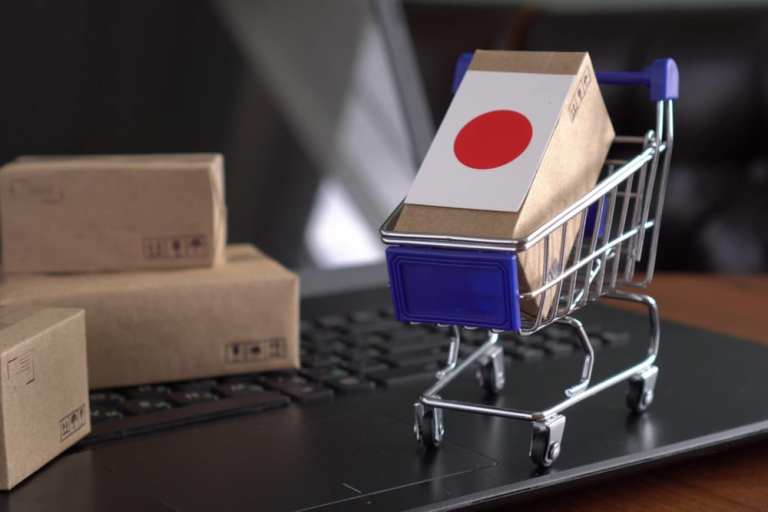
In developed countries, the notion of cash on delivery – COD – is a payments relic borne out of the days of mail order purchases made by phone for which the purchase amount was settled, literally in cash, when the item was delivered to the purchaser’s home.
Credit and debit cards, and later, digital wallets, like PayPal, eliminated that friction for the online shopper, kept transactions secure, and reduced the risk from the merchant that items shipped wouldn’t be paid for.
In many developing worlds, that is still very much a way of life — a way for small and micro merchants to take online orders without a point-of-sale (POS) system and for consumers to inspect the merchandise before they settle the transaction in cash with the delivery driver.
In Japan, an economy of $4.971 trillion, it is also still very much a way of life for consumers and merchants. What’s unusual about this preference, Paidy Founder and Executive Chairman Russell Cummer told Karen Webster, is that credit card penetration is high — the average Japanese consumer has 3.2 of them — yet their use in making online purchases is quite low.
Japanese eCommerce customers use credit to make online purchases roughly 55 percent of the time, with the remaining 45 or so percent divided between COD or carrier billing set-ups — and for two main reasons.
“One [reason] is risk mitigation, and the other is a fear of fraud,” Cummer noted. “Some consumers like to see the goods before they pay for them. And in Japan, there is a tendency among consumers to worry about overspending, which has created a cultural preference for cash — you can’t double spend [cash], which means you can really manage your budget.”
Trying to offer consumers a better functioning alternative to cards and COD was the core concept at the founding of Paidy, he noted. The company’s growing roster of users, partner merchants and the firm’s latest capital raise from existing investor Itochu all point to the fact that the trend lines in Japan were already pointing to consumer desire for a smoother end-to-end digital commerce experience.
The global coronavirus outbreak, he noted, has accelerated those trend lines as consumer enthusiasm for COD and the close contact interactions it requires has recently hit an all-time low.
Simply removing negatives, he noted, is only a start.
“The thesis is consumers want an offering that is as frictionless at checkout as cash on delivery, but then every moment thereafter is as powerful as a card,” Cummer explained.
Building The Best Of Both Worlds
Among the various cultural drivers that have made COD popular as a payment method — there is also the standing fact that when it comes to checking out of a transaction, it’s easier than having to enter in card information. It is lower friction, Cummer noted, but only in the moment.
After checkout, the consumer then needs to worry about being home to collect the delivery and having the right amount of cash on hand to pay. If a return needs to be made, there is no easy way to route a refund back.
Paidy’s offering essentially collects all of a customer’s bills across Paidy-accepting merchants over the course of a month, and then organizes them into a single bill they can pay at the end of the month as they choose. Consumers who like cash can make cash payments at convenience stores, or consumers can link a bank account and pay on demand or set-up auto debiting.
And, although consumers aren’t paying cash at the time of delivery, which might seem to intrude on cultural norms against accruing debt, Cummer noted, because the product doesn’t charge interest for the 30-day billing period, it isn’t thought of by consumers as a loan or credit product.
“In Japan, deferred payment options have existed for longer than Paidy, they’ve just never had the consolidation that we have, and they tended to be shorter term at about two weeks,” Cummer said. “We looked at that and thought we could give people basically until next month. And now we’re just looking for improvements … and asking, ‘How can we make that better?’”
What’s Next
Paidy, Cummer told Webster, has big plans for the back half of 2020 in terms of new rollouts and an expanded menu of options for its consumers. Today, he noted, the company has the 30-day term that is interest free, as well as longer term installment offerings to further spread payments out, which have an interest rate roughly comparable to that of a credit card.
Cummer said the firm believes there is even more variation and optionality it can offer within its business model. Although he declined to offer more specific comments about what those product offerings will be, he said the company is planning two big upgrades before the end of the year, as well as a host of smaller improvements to its existing product line.
One of the nice things about the recent funding raise, he noted, is it allows Paidy to think big about helping build a better digital payments product for consumers who are looking to step away from using cash, but who don’t want to switch their mobile and digital purchases to their cards.
Those customers have made it clear they are looking for something different on offer, which means this year Paidy’s purpose is to find as many variations on that difference as it can to better meet consumers where they are and carry on traveling with them throughout their digital commerce journeys.
“My mantra to my management team internally is unique services are valued uniquely by consumers,” he said. “If I want a pumpkin spice latte, I’m going to walk the extra block to Starbucks. We think the same is true if you are the only payment service that can give the customers exactly what they want in terms of a repayment profile.”